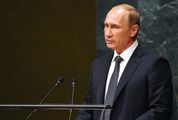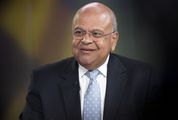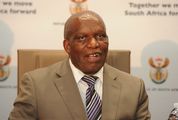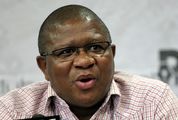AS Walt Disney planned its campaign for Star Wars: The Force Awakens, chief executive Robert Iger had a question for his marketing team: how much do we really need to do?
The first Star Wars movie in a decade and the first in 32 years to feature classic characters such as Princess Leia and Chewbacca is so highly anticipated by the franchise’s huge fan base that advertising is arguably unnecessary. A poster and an opening date might be all that are needed to make the December 17 release the number one movie of the year.
Mr Iger, who has been vocal about his desire to rein in marketing costs, didn’t propose anything quite so radical.
But last year he did ask Disney’s marketers whether the company needed to spend the more than $100m that is typical of global advertising campaigns for major Hollywood movies, according to people with knowledge of the Star Wars marketing plans.
Through a spokesman, Mr Iger declined to comment. Some people on Walt Disney Studios’ marketing team were reluctant to take any risks with The Force Awakens, the linchpin of the company’s plan to profit from its $4bn purchase of Lucasfilm in 2013, one of the people said.
Disney declined to say how much it would spend on direct marketing for The Force Awakens but the people familiar with the company’s plans say the outlay will end up being slightly lower than what studios typically put into would-be blockbusters. "Common sense says they should spend on the low end of what you usually spend on a big movie," said a Hollywood marketing veteran not involved in Star Wars.
"Anything lower and you’re taking a risk by drawing undue attention" for running such an unorthodox campaign.
Through midday on Monday, Walt Disney Studios had spent $17m on television ads for The Force Awakens, according to iSpot.tv, a TV advertising research firm, though that number is expected to rise significantly in the days before the film’s release.
For some of the year’s most aggressively advertised films, including Mad Max: Fury Road, Mission: Impossible — Rogue Nation and Ant-Man, studios spent about $30m on television time for each, according to iSpot. Ad spending is a common topic of discussion in Hollywood, where studios have slashed the amount they pay movie stars but haven’t been able to reduce their marketing costs.
And despite efficient new digital platforms, rarely are producers, executives and other power players behind a movie willing to try something new that could be blamed for a weak box office performance, particularly on a "tentpole" film that cost more than $200m to produce. As a result, studios regularly spend about $50m advertising a major release in the US and a little more overseas, with the majority going to TV.
Yet despite Disney’s less aggressive approach, The Force Awakens has smashed presale records and is widely expected to rival the opening weekend record: $209m for June’s Jurassic World.
While Disney isn’t setting spending records, others promoting Star Wars are. Companies eager to appeal to fans of lightsabers and X-wing fighters spent about $38m on The Force Awakens— related TV ads in the US through Monday, according to iSpot. That is a record for "co-branded" ads on a movie, the research firm said, exceeding the prior high of $26.5m set by July’s Minions.
The studio selected seven companies as official "brand partners" for the The Force Awakens campaign — Hollywood-speak for companies that buy ads promoting the movie and their products together. The partners in this case include Verizon Communications, General Mills and Procter & Gamble’s Covergirl makeup brand.
Also helping the movie indirectly: $51m in TV ads through December 1, according to iSpot, by companies selling Star Wars — themed products that aren’t directly tied to The Force Awakens, including Wal-Mart Stores and Electronic Arts, as well as Disney’s own video game unit.
In addition, Disney has enlisted partners online, including Alphabet’s Google, which is modifying websites and apps, such as its YouTube video player, with special Star Wars graphics.
Disney is also taking advantage of cross-branding opportunities among its own units, debuting the final trailer for The Force Awakens on ESPN’s Monday Night Football, and with a new ad on its ABC network that was introduced by Shonda Rhimes, the producer of the series Scandal.
Massive built-in interest in the US and other Western nations has allowed Disney to take creative risks on The Force Awakens marketing. Across three trailers and 12 TV commercials, it has shown less than six minutes of footage from the two-hour-and-sixteen-minute film, a person involved in the campaign said. "That’s extremely low," said a marketing executive at a rival studio. "Twelve to fifteen minutes is the average."
Despite complaints from audiences and film makers — like The Force Awakens director J.J. Abrams — about trailers that give away the stories, studios have said revealing plot points and showing the most exciting action scenes is typically the most effective way to draw big audiences.
In the case of Star Wars, however, Disney’s marketing materials have revealed little of the plot. Mark Hamill’s Luke Skywalker and new characters played by Lupita Nyong’o and Andy Serkis haven’t been shown at all.
Instead, the ad campaign has concentrated on reassuring audiences that the new movie features the same themes, sense of adventure and aesthetic as the original trilogy — and that it won’t repeat the mistakes of the prequels released between 1999 and 2005, which were panned by critics and many viewers.
In some foreign countries, particularly in Asia, Star Wars isn’t an ingrained part of the culture and ads have to do some explaining. That is why a trailer released last month in Japan and an August commercial for Korean audiences that revealed new plot points became viral Internet hits in the rest of the world.
More Africa news from The Wall Street Journal
More news from The Wall Street Journal
Premium access to WSJ.com: $1 a week for 12 weeks
-

Stormtrooper actors pose for photos around a life-sized Star Wars TIE Fighter model on display at Singapore’s Changi Airport last week. Star Wars fans await the release of the seventh episode — The Force Awakens. Picture: REUTERS/EDGAR SU
-

Star Wars is a cultural phenomenon that spans generations and has spawned offshoots such as France's Sport Saber League. Two members pose with their light sabers in front of the Eiffel tower in Paris, France, on November 26 2015. Picture: REUTERS
AS Walt Disney planned its campaign for Star Wars: The Force Awakens, chief executive Robert Iger had a question for his marketing team: how much do we really need to do?
The first Star Wars movie in a decade and the first in 32 years to feature classic characters such as Princess Leia and Chewbacca is so highly anticipated by the franchise’s huge fan base that advertising is arguably unnecessary. A poster and an opening date might be all that are needed to make the December 17 release the number one movie of the year.
Mr Iger, who has been vocal about his desire to rein in marketing costs, didn’t propose anything quite so radical.
But last year he did ask Disney’s marketers whether the company needed to spend the more than $100m that is typical of global advertising campaigns for major Hollywood movies, according to people with knowledge of the Star Wars marketing plans.
Through a spokesman, Mr Iger declined to comment. Some people on Walt Disney Studios’ marketing team were reluctant to take any risks with The Force Awakens, the linchpin of the company’s plan to profit from its $4bn purchase of Lucasfilm in 2013, one of the people said.
Disney declined to say how much it would spend on direct marketing for The Force Awakens but the people familiar with the company’s plans say the outlay will end up being slightly lower than what studios typically put into would-be blockbusters. "Common sense says they should spend on the low end of what you usually spend on a big movie," said a Hollywood marketing veteran not involved in Star Wars.
"Anything lower and you’re taking a risk by drawing undue attention" for running such an unorthodox campaign.
Through midday on Monday, Walt Disney Studios had spent $17m on television ads for The Force Awakens, according to iSpot.tv, a TV advertising research firm, though that number is expected to rise significantly in the days before the film’s release.
For some of the year’s most aggressively advertised films, including Mad Max: Fury Road, Mission: Impossible — Rogue Nation and Ant-Man, studios spent about $30m on television time for each, according to iSpot. Ad spending is a common topic of discussion in Hollywood, where studios have slashed the amount they pay movie stars but haven’t been able to reduce their marketing costs.
And despite efficient new digital platforms, rarely are producers, executives and other power players behind a movie willing to try something new that could be blamed for a weak box office performance, particularly on a "tentpole" film that cost more than $200m to produce. As a result, studios regularly spend about $50m advertising a major release in the US and a little more overseas, with the majority going to TV.
Yet despite Disney’s less aggressive approach, The Force Awakens has smashed presale records and is widely expected to rival the opening weekend record: $209m for June’s Jurassic World.
While Disney isn’t setting spending records, others promoting Star Wars are. Companies eager to appeal to fans of lightsabers and X-wing fighters spent about $38m on The Force Awakens— related TV ads in the US through Monday, according to iSpot. That is a record for "co-branded" ads on a movie, the research firm said, exceeding the prior high of $26.5m set by July’s Minions.
The studio selected seven companies as official "brand partners" for the The Force Awakens campaign — Hollywood-speak for companies that buy ads promoting the movie and their products together. The partners in this case include Verizon Communications, General Mills and Procter & Gamble’s Covergirl makeup brand.
Also helping the movie indirectly: $51m in TV ads through December 1, according to iSpot, by companies selling Star Wars — themed products that aren’t directly tied to The Force Awakens, including Wal-Mart Stores and Electronic Arts, as well as Disney’s own video game unit.
In addition, Disney has enlisted partners online, including Alphabet’s Google, which is modifying websites and apps, such as its YouTube video player, with special Star Wars graphics.
Disney is also taking advantage of cross-branding opportunities among its own units, debuting the final trailer for The Force Awakens on ESPN’s Monday Night Football, and with a new ad on its ABC network that was introduced by Shonda Rhimes, the producer of the series Scandal.
Massive built-in interest in the US and other Western nations has allowed Disney to take creative risks on The Force Awakens marketing. Across three trailers and 12 TV commercials, it has shown less than six minutes of footage from the two-hour-and-sixteen-minute film, a person involved in the campaign said. "That’s extremely low," said a marketing executive at a rival studio. "Twelve to fifteen minutes is the average."
Despite complaints from audiences and film makers — like The Force Awakens director J.J. Abrams — about trailers that give away the stories, studios have said revealing plot points and showing the most exciting action scenes is typically the most effective way to draw big audiences.
In the case of Star Wars, however, Disney’s marketing materials have revealed little of the plot. Mark Hamill’s Luke Skywalker and new characters played by Lupita Nyong’o and Andy Serkis haven’t been shown at all.
Instead, the ad campaign has concentrated on reassuring audiences that the new movie features the same themes, sense of adventure and aesthetic as the original trilogy — and that it won’t repeat the mistakes of the prequels released between 1999 and 2005, which were panned by critics and many viewers.
In some foreign countries, particularly in Asia, Star Wars isn’t an ingrained part of the culture and ads have to do some explaining. That is why a trailer released last month in Japan and an August commercial for Korean audiences that revealed new plot points became viral Internet hits in the rest of the world.
More Africa news from The Wall Street Journal
More news from The Wall Street Journal
Premium access to WSJ.com: $1 a week for 12 weeks
























Change: -1.55%
Change: -1.49%
Change: -2.49%
Change: -1.19%
Change: -1.90%
Data supplied by Profile Data
Change: 0.00%
Change: 0.00%
Change: -1.55%
Change: 0.00%
Change: 0.00%
Data supplied by Profile Data
Change: 0.02%
Change: 0.03%
Change: 0.09%
Change: 3.17%
Change: 0.35%
Data supplied by Profile Data
Change: 0.00%
Change: 0.00%
Change: 0.00%
Change: 0.00%
Change: 0.00%
Data supplied by Profile Data